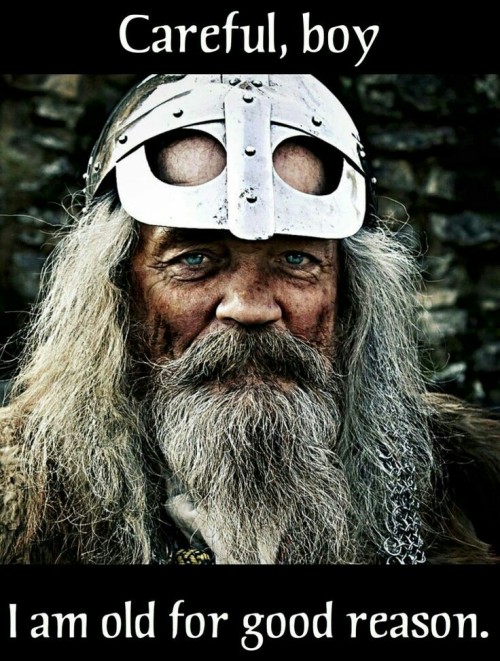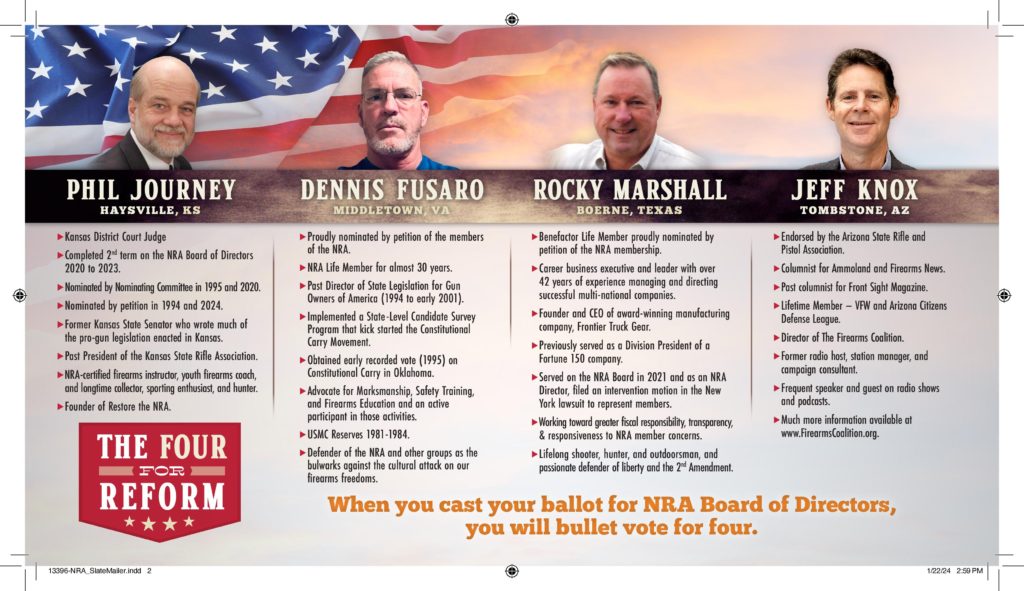
Category: Manly Stuff

The official NRA magazines with the ballots for the 2024 Board of Directors election have started to arrive. The Complementary Spouse and I both received ours today.
I would urge you in the strongest possible terms to bullet vote, i.e, only vote for these candidates and no others, for the Four for Reform. While there are a couple of others deserving of your vote, it is essential that these four get elected.
 All four are on the ballot as a result of your efforts in signing their petition. We need people like them on the Board as they won’t put up and shut up. Indeed, both Judge Phil Journey and Rocky Marshall were retaliated against for standing up for what is right. That retaliation has led to the NRA being charged with violating the State of New York ‘s whistleblower law. This is one of the charges that the jurors in the New York trial are in the process of deciding guilt or innocence.
All four are on the ballot as a result of your efforts in signing their petition. We need people like them on the Board as they won’t put up and shut up. Indeed, both Judge Phil Journey and Rocky Marshall were retaliated against for standing up for what is right. That retaliation has led to the NRA being charged with violating the State of New York ‘s whistleblower law. This is one of the charges that the jurors in the New York trial are in the process of deciding guilt or innocence.So few of the eligible voters actually vote that every vote for these four is critical.
We don’t know the outcome of the trial in New York and we don’t know what remedies Judge Cohen will impose if the NRA is found guilty. He could dissolve the current board and reduce it in size. He could appoint a special overseer. He could appoint a temporary board of people who are not tainted such as these four. He could do all of these things and that is why support for clean, untainted candidates is so important.

HONOLULU (HawaiiNewsNow) – One of the few remaining links to Pearl Harbor’s past is now gone.
Family of war veteran Sterling Cale announced his passing Wednesday, saying he died on Jan. 20 at his Aiea home overlooking Pearl Harbor’s ‘Battleship Row’.
On Sunday, Dec. 7, 1941, Cale was a 20-year-old pharmacist mate assigned to the U.S. Naval Hospital. He was wrapping up working a night shift when he saw military maneuvers in action. He thought it was odd for a Sunday.
“But right then, an aircraft flew over his right shoulder and it gave him shudders he said,” his son, Sterling Cale Jr. said. “As it banked, he saw the ‘red meatball’ of the Japanese empire and he knew that we were at war.”

